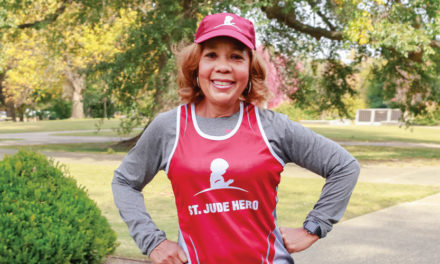With shorter days and more to do in each of them, December seems to be the perfect storm of stress, anxiety, and depression. Holiday planning and year-end processing can make surprise attacks on the nervous system. Top that off with a significant decrease in exposure to sun, sleep, and weekends, and it is no wonder why Healthline and the American Psychological Association report that nearly half the population has increased stress during the holidays. Healthy physical fitness and food choices help mediate this risk. However, even when we do everything right, the stress of the season can sneak up.
Holidays present a challenging list of demands: from tasks and preparation like gift-giving and entertaining to scheduling and prioritizing things like family visits and holiday parties. This juggling act has two important impacts on the psyche.
Allostatic Load
First is the increased activation of the autonomic nervous system (ANS), specifically the sympathetic system or the fight/flight/freeze response. Prolonged ANS firing creates an overload that often presents as an imbalance of emotion and disrupts the ability to regulate. This is called Allostatic Load and it is impacted by stress, which is where the term toxic stress is derived. But toxic stress isn’t just a response to a higher demand for time/attention/energy, it can also come from deep-rooted associations and emotional confusion. Nothing like family and cultural traditions to tug at those strings.
In addition to the stress of the holidays, we are also in an increased state of vulnerability as we move closer to the new year. Whether it’s a financial assessment at work or a mental list of the resolutions we didn’t achieve, it is hard not to let the end of the year feel like an adult report card. The residual effect of which is an underlying assumption that we should be judging ourselves. It’s like an annual internal (and often unconscious) bullying. This might seem abstract, but it has real physical implications. The thing about the body is that it tries to protect us by finding homeostasis, or balance, and in doing so we often don’t recognize or notice that we are being impacted until it’s too much for our ANS to handle.
The good news is that with a little intention we can increase our resilience and ability to cope with stress.
Deconstructing Stress
Understanding stress helps us address the problem head on. Below are core techniques for addressing the stress response and steps to gain agency over it.
Find the Eustress
In the above examples, I focus a lot on the potential negative impact of stress. Actually, stress is not itself a bad thing. There are two types of stress: eustress and distress. While the body immediately receives them exactly the same way, the two are different in the ways that they process. Eustress is good stress. It’s the kind of stress an Olympic athlete feels as they approach their event. It is quickly used to help the athlete perform and get the body back to homeostasis. Distress is bad stress. It sticks around and gets us into negative loops of rumination.
A powerful tool is to find the good stress and use it. I’m not talking about pretending you see unicorns and rainbows—that’s disillusionment. We get to use our powerful brains to recognize and use stress to our advantage.
Here’s how to do it:
- Notice the stress and acknowledge it is giving you a boost.
- Use the momentum: get stuff done, set appropriate boundaries, reestablish expectations, etc.
- Be proud of yourself for doing it
Name the Distress
Not all stress can be turned around with cognitive effort. It is arguably more important to recognize distress than eustress. Impulsiveness and aggression are common symptoms of a distressed system. This is because the emotional and social part of the brain is in charge. One of the most powerful research findings around this is that we can actually alleviate the impact of distress by reconnecting the frontal lobe, the part of the brain that thinks, evaluates, and decides, through our language center. Said simply we can Name it to Tame It.
Here’s how to do it:
- Recognize a behavior or feeling of anxiety, sadness, anger, etc.
- Give it a name and remind yourself that it is just a name—not a grade or a sentence, it is just a label.
- Repeat
Embrace All the Feels
Deeper than eu- and distress is emotional pain, especially when we have childhood associations and bonding involved. Perpetual exposure to stereotypical happy holiday lifestyles has a nasty way of reminding us of real and deep pain that exists. A key element to both healing this pain and avoiding an avalanche of negative outcomes is to feel. Avoid the urge to do the things that distract or numb that feeling. We don’t have to stay in the pain forever, just long enough to accept it is there. There are three steps to this one….
- Set a timer or a deadline. We can be as mad as we want for 10 minutes. Or we can stay home and watch Netflix with a box of tissues Friday night.
- Once we let ourselves feel, we must intentionally start to engage in objective observation. This means we have to eliminate all of the self-evaluation and try to look at the feeling as if we were a thousand miles away from them.
- Once we’ve fully felt and distantly observed our feelings, it is time to get up and get over it. This step should only be done after the first two, but it is a crucial element that we have to commit to at the start. When the timer goes off, go back into the living room. Or when Saturday comes, we put our best jeans on and get back to our to-do lists.
Get Help
Seeking help is an important part of stress management. Help-seeking behavior is a marker of maturity and a predictor of wellness. We are social beings and we are built to connect and help each other. Asking for help can be as simple as asking a partner to complete a holiday task or a friend to keep us accountable to a healthy habit. If experiencing prolonged distress that is interrupting daily life, seek professional help.
Must-Have Tools in the Stress-Stamina Tool Kit
There are also ways we can build resilience and increase stress-stamina. Below are four techniques that are useful yearlong but may be especially important to incorporate into our December to-do list.
|
What |
Mental Hygiene |
Self-Care Sunday |
Love and Be Loved |
Give Gratitude |
|
Why |
Mindfulness practices are like lifting weights. Ability increases through developing strength. Research shows that mindfulness strengthens the brain’s capacity to eliminate emotional interference and increase cognitive choice in reacting to surroundings. |
… or Monday or any day. Intentional boundaries and health-seeking activities are especially important this month, so I suggest having a weekly date with yourself. |
Research tells us that social connections play a crucial role in physical and mental health. It is one of the only consistent predictors of successful coping in times of crisis. |
Research shows that individuals who cultivate gratitude sleep better, enjoy relationships more, and report a higher sense of well being and satisfaction. |
|
How |
Yoga Meditation Mindful eating Walking Journaling Crafting |
Massage A really good meal Epsom salt bath Read a good book Pamper session Say no (Do this a lot. Boundaries are the ultimate self-care) |
Hug a friend Smile at a neighbor Call an old friend Make eye contact in a conversation Volunteer for something meaningful Attend local community events |
Send thank you cards List 3 things you are thankful for every day Write a gratitude post and tag a friend Close your eyes and think about a non-monetary gift someone has given you |
Dr. Tegan Jemma Reeves is a yoga teacher, psychology professor, and epidemiology research associate dedicated to embodied literacy. Her work revolves around somatic learning and perception and techniques to increase adaptive healthy embodied skill-acquisition. Dr. Tegan (the Vegan) teaches public yoga classes at Hot Yoga Plus, Cooper Street Yoga, and Mind/Body HAUS. Research citations can requested via [email protected]







